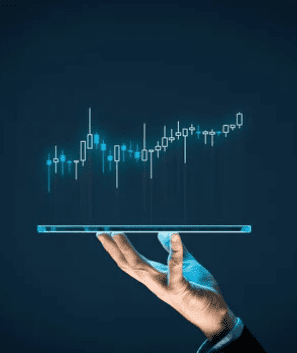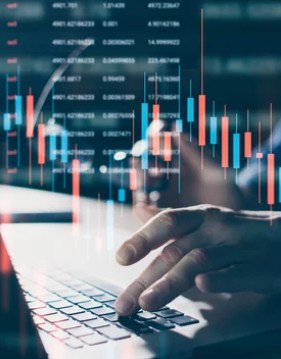Companies have different ways of paying back capital investment to their investors. Common methods of paying the investors are through dividends and stock price appreciation.
Another popular way companies use to settle capital investment is through buybacks. The strategy is popular among publicly traded companies (see day trading, too). They buy back their shares from the market. As an investor, it’s good to understand how stock buybacks work. Why companies buy back their stocks and the benefits of buybacks are crucial.
In earlier times, companies rarely bought their stocks back but, stock buyback became a trend. In 2018, the S&P 500 companies used more than $806 billion to fund buybacks. This figure represents a $200 billion increase from the previous record in 2007.
The onset of the Covid-19 pandemic affected the stock buyback trend, resulting in a 29% downfall in 2020. However, forecasts show a boom in the coming years.
What might be the driving factor for buybacks? Is this move good for the economy, and who are the beneficiaries? Let’s find out more.

What Next After Stock Buybacks?
A stock exchange becomes a buyback when a company (see Canada Nickel) opts to buy its shares from the market. Therefore, the stocks under the shareholders go back to the company in whole or partial.
The company may buy back its shares if it feels its stocks are undervalued (see small-cap stocks) or plan to leverage tax efficiency and cut down on the excess of outstanding shares.
Methods of stock buybacks include:
- The fixed price tender offer
- Open-market buybacks
- Dutch auction tender offer
- Direct negotiation
Stock buybacks aim to limit the number of outstanding shares. Outstanding shares increase the stakeholder’s ownership stake.
Understanding what happens to the stocks the company repurchases is always unclear. The company may opt to retire these shares not to trade anymore or hold them on their treasury. Such shares are called treasury shares. These shares are inactive in the stock exchange market but can sell out again in the future.

What Are Stock Buybacks?
A stock buyback occurs when a company buys back its stocks from the stock market. They may retire them from being sold or hold them in treasury and unleash them in the future. It is also called the share repurchase. The company uses its accumulated cash to fund the buy of the stocks.
Through buying the company stocks, the company gets a chance to invest back in itself. After buying back the stocks, the number of outstanding shares goes down. Thus, it creates a long-term effect on capital investment – for more long-term investing see Canadian stocks to hold on to.
How Does a Company Buy Back Its Stock?
There are various ways through which companies buy back their shares. Below are some of these companies’ methods for buying back their stocks. On a side note, you can consult with robo advisors on all things connected to the stock market.
Open Market
The open market is the most common method companies use to buy back their stocks. This method of stock buybacks accounts for more than 95% of all stock repurchases. The company announces the repurchase plans regularly before repurchasing them.
The analysis of market conditions determines whether to buy back stocks. It also determines the time and the number of shares. This method allows a company to buy back its stocks over an extended period. Restrictions are enacted on the top stocks you can buy per day to guide the stock purchase.

You’re not allowed to buy back more than 25 percent of the average daily volume.
The open market buyback method creates a demand for shares which can impact the prices of the said stocks.
Fixed-Price Tender

This stock buyback method was common before 1981. It shows the price specifications, how many shares are to be bought, and how long the offer should last. This offer is conditional and receives tenders of the least expected shares. It is also open as you can withdraw tendered shares before the elapse of the expiry day.
Shareholders have the option to get involved or not to. But, if they opt to engage, they dictate how many shares to tender to the company at the given price.
The tendered shares will be cut down if more than the amount sought. This will force the company to buy a lower amount than their target at the given price. If the tendered shares are below the desired value, the company can extend the expiry date.
Dutch Auction
This method of stock buybacks began in 1981. It dictates the price at which the shares will be bought at that given time. Shareholders are then brought to the table to auction their stocks. The company will then collect these responses and establish a demand curve.
The stocks price is the low-end price to allow the company to finance the purchase of the sought shares. The company will then pay investors or brokerage firms who tendered the same value or less of the purchase price.
The tendered shares may be more than the sought amount, and the company will have to buy less than the tendered. But, the price remains constant or reduced. Otherwise, if the tendered shares are few, the company can buy all the shares at the greatest price. Cancellation of the offer can be a choice here as well.

Direct Negotiation
This method involves the company negotiating with its major shareholders. This method incorporates premium share prices. Thus, the shareholders stand to gain a handsome return. Direct negotiation with stakeholders is helpful. It saves time and offers flexibility in negotiations. In the end, it is cost-effective but can consume more time than you expected.
Types of Stocks Buybacks
Selective Buybacks
Selective buyback is one type of stock buyback. It ensures all shareholders get a unique offer from the other. The deal may not involve all shareholders but just a part of them. Conditions for the offer vary depending on the country. Shareholders are notified to have a meeting to vote for the selective buyback. The notice to the meeting has vital information about the buyback.
Employee Share Scheme Buyback
This buyback method allows the company to buy shares owned by its employees. Salaried employees also fall in this bracket and may be from that particular company or a related one. The method requires an ordinary resolution. The company (listed) can also buy its stocks in the stock market. But, they must pass the ordinary resolution of the 10/12 limit.
On-market Buybacks
This stock buyback method allows a company to unmarketable shares from its shareholders. Although the shares bought should be cancelled, the method does not need a resolution.
Reasons Why Companies Buy Back Stocks
Various reasons make companies want to buy back their stocks. Some of these reasons are discussed below.
To Show That Their Stock Is Undervalued
Traded stocks are out of the control of the company. Thus, the market determines prices and related entities. A certain company’s shareholder value may be lower than the company’s expectations. It may also be the view of its management that its stock is undervalued. In such cases, they tend to buy partial shares from the exchange market to raise the remaining shares’ price.
For Flexible Capital Distribution to Shareholders
A company can opt to pay its investors with dividends or stock buybacks.

Dividend payments are a common method.
But, they don’t have flexibility in payment dates and amounts. They have regular payment dates and charges. All common shareholders must receive the amount.
But, stock buybacks have a high degree of flexibility on payment dates and amounts. The method does not have regular payment dates or amounts.
To Enjoy Tax Benefits
The capital gain tax rate varies according to country. You can opt for buybacks rather than dividend payments. This is especially in countries with lower capital gain tax rates. (Funds received by the shareholders from the stock buyback presumes as capital gains).
To Increase the Number of Shares Outstanding
A company may have stock options which can be a section of compensation packages. The company should incorporate stock buybacks. These stock options, the tally of shares outstanding increases.
The company needs to buy some more shares from the stock market to keep their shares outstanding optimal.
As a Defense against a Hostile Takeover
A company can experience a takeover, whether hostile or friendly. A hostile takeover involves the opponent company approaching the target company’s shareholders through proxy votes or tender offers. They don’t need the approval of the directors.
To cushion themselves against such risks, the target company may need to buy back some of its stocks. They get this from their shareholders. It reduces the opponent company’s ability to control the target company’s interest.

FAQs
Who benefits from a stock buyback?
The company’s shareholders are the group that benefits from the stock buyback. The stock buyback ensures the shareholders’ ownership of the company increases. Thus, they earn more dividends.
How does the stock buyback affect the stock prices?
The stock buyback increases the shares prices. The stock markets work based on supply and demand. So, when a company buys back some of its stock, supply goes down. The reduction in outstanding shares will then result in a price hike.
The Bottom Line
Several factors contribute to a company buying back its stocks from the stock market. The primary reason is to reduce the outstanding shares. Besides, if a company thinks their stock is undervalued, the next step will be to buy back these stocks.
After buying such stocks, they retire them or hold them in treasury and later bring them back to the market. The company can also opt to purchase these shares from its major shareholders.